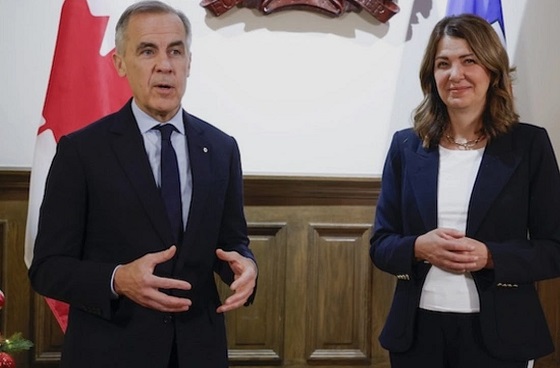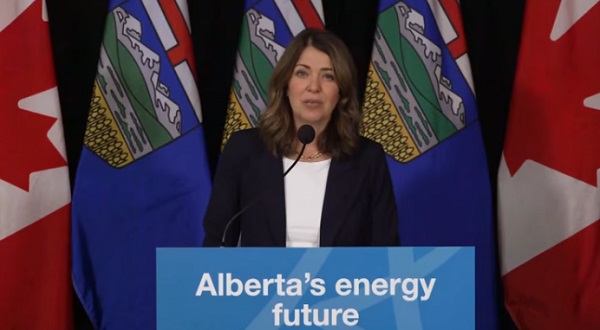Alberta
Alberta deficit projected to hit 6.5 billion – up 1.3 billion after first quarter

Q1 update: Steering through the storm
Despite global economic challenges, Alberta remains resilient, prepared to make tough yet prudent choices to support families.
Like other provinces across Canada, Alberta is facing growing financial challenges as global economic uncertainty affects Q1 projections. The first quarter update projects the 2025-26 deficit will reach $6.5 billion, up $1.3 billion from Budget 2025’s forecast. The most significant factor in the growth of the deficit is related to a 38 per cent decline of natural resource revenue, which has decreased from its peak of $25.2 billion in 2022-23 to a forecast of $15.7 billion in 2025-26.
Alberta is also facing added pressure from a growing population, which is projected to increase 2.4 per cent in 2025-26. Other external factors including lower oil prices, tariff threats and slowing global growth are impacting the province’s bottom line. Even with these challenges, Alberta remains committed to prioritizing essential services such as health care and education, while keeping everyday costs like childcare, utilities and housing affordable for families.
“We know the road ahead has its challenges, but with disciplined financial management and smart investments, we will stand by families, rein in the deficit and secure a stronger future.”
More than half, or $2.5 billion, of the $4-billion contingency set aside in Budget 2025 remains to address expense pressures this year. To date, allocations include $706 million for disaster and emergency spending, with $700 million for wildfire response and $6 million to replant trees in affected areas. Another $752 million has been allocated to cover increases not offset by dedicated revenue.
The province continues to engage with federal partners to ensure Alberta’s fiscal interests are protected, key industries are supported, and critical infrastructure is built. Despite external shocks, Alberta’s economy remains resilient. Its real GDP is forecast to lead Canada, and the private sector continues to perform strongly with investment, construction and labour market activity supporting stability.
Alberta’s government is working on a broader strategy to further diversify the economy, reduce vulnerability to oil price swings and trade disruptions, and build a stronger, more resilient Alberta.
Key facts:
- Operating expense is forecast at $65 billion, $679 million more than Budget 2025. This is primarily due to an increase in public-sector wage growth.
- The forecasted price of oil this year is $63 USD per barrel, a decrease of $26 USD per barrel since 2022, when the price of oil averaged over $89 USD per barrel.
- In the first quarter of 2025-26, both Saskatchewan and New Brunswick exceeded their budget forecasts, facing unexpected financial pressures. Saskatchewan shifted from a projected $12-million surplus to a $349-million deficit, and New Brunswick’s deficit climbed to $668.7 million, above its budgeted $549 million.
Related information
- Learn more about Budget 2025 here: Budget | Alberta.ca
Alberta
READ IT HERE – Canada-Alberta Memorandum of Understanding – From the Prime Minister’s Office

Alberta
Falling resource revenue fuels Alberta government’s red ink

From the Fraser Institute
By Tegan Hill
According to this week’s fiscal update, amid falling oil prices, the Alberta government will run a projected $6.4 billion budget deficit in 2025/26—higher than the $5.2 billion deficit projected earlier this year and a massive swing from the $8.3 billion surplus recorded in 2024/25.
Overall, that’s a $14.8 billion deterioration in Alberta’s budgetary balance year over year. Resource revenue, including oil and gas royalties, comprises 44.5 per cent of that decline, falling by a projected $6.6 billion.
Albertans shouldn’t be surprised—the good times never last forever. It’s all part of the boom-and-bust cycle where the Alberta government enjoys budget surpluses when resource revenue is high, but inevitably falls back into deficits when resource revenue declines. Indeed, if resource revenue was at the same level as last year, Alberta’s budget would be balanced.
Instead, the Alberta government will return to a period of debt accumulation with projected net debt (total debt minus financial assets) reaching $42.0 billion this fiscal year. That comes with real costs for Albertans in the form of high debt interest payments ($3.0 billion) and potentially higher taxes in the future. That’s why Albertans need a new path forward. The key? Saving during good times to prepare for the bad.
The Smith government has made some strides in this direction by saving a share of budget surpluses, recorded over the last few years, in the Heritage Fund (Alberta’s long-term savings fund). But long-term savings is different than a designated rainy-day account to deal with short-term volatility.
Here’s how it’d work. The provincial government should determine a stable amount of resource revenue to be included in the budget annually. Any resource revenue above that amount would be automatically deposited in the rainy-day account to be withdrawn to support the budget (i.e. maintain that stable amount) in years when resource revenue falls below that set amount.
It wouldn’t be Alberta’s first rainy-day account. Back in 2003, the province established the Alberta Sustainability Fund (ASF), which was intended to operate this way. Unfortunately, it was based in statutory law, which meant the Alberta government could unilaterally change the rules governing the fund. Consequently, by 2007 nearly all resource revenue was used for annual spending. The rainy-day account was eventually drained and eliminated entirely in 2013. This time, the government should make the fund’s rules constitutional, which would make them much more difficult to change or ignore in the future.
According to this week’s fiscal update, the Alberta government’s resource revenue rollercoaster has turned from boom to bust. A rainy-day account would improve predictability and stability in the future by mitigating the impact of volatile resource revenue on the budget.
-

 Alberta2 hours ago
Alberta2 hours agoFrom Underdog to Top Broodmare
-

 Crime2 days ago
Crime2 days agoB.C.’s First Money-Laundering Sentence in a Decade Exposes Gaps in Global Hub for Chinese Drug Cash
-

 Crime2 days ago
Crime2 days agoFBI Seizes $13-Million Mercedes Unicorn From Ryan Wedding’s Narco Network
-

 armed forces2 days ago
armed forces2 days ago2025 Federal Budget: Veterans Are Bleeding for This Budget
-

 Banks2 days ago
Banks2 days agoThe Bill Designed to Kill Canada’s Fossil Fuel Sector
-

 Crime2 days ago
Crime2 days agoMexico’s Constitutional Crisis
-

 Alberta1 day ago
Alberta1 day agoAlberta and Ottawa ink landmark energy agreement
-

 Artificial Intelligence2 days ago
Artificial Intelligence2 days agoTrump’s New AI Focused ‘Manhattan Project’ Adds Pressure To Grid







